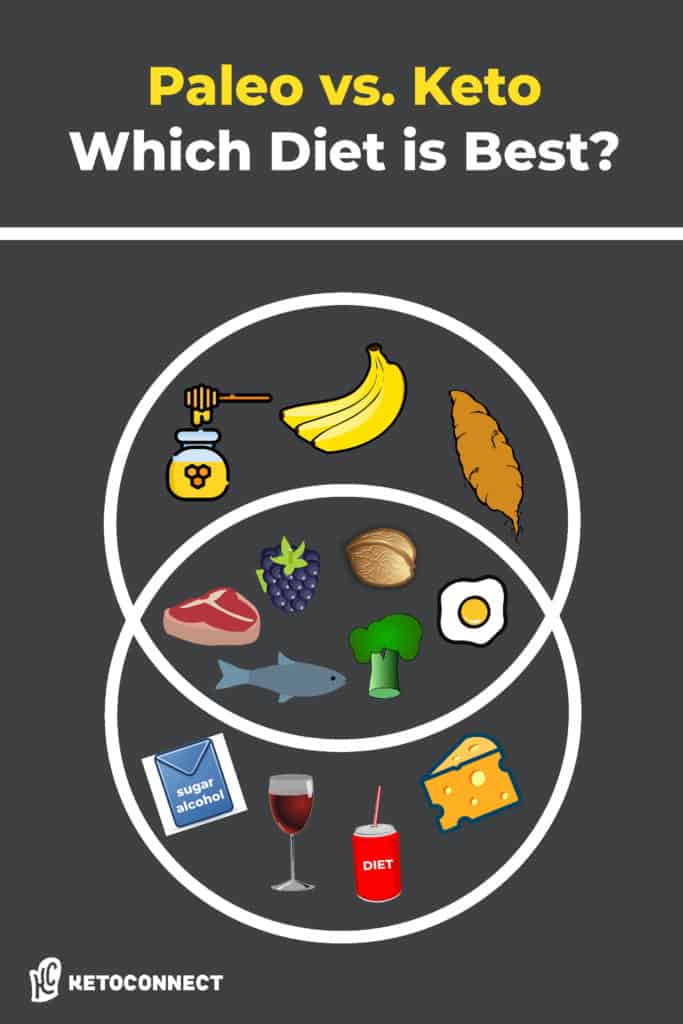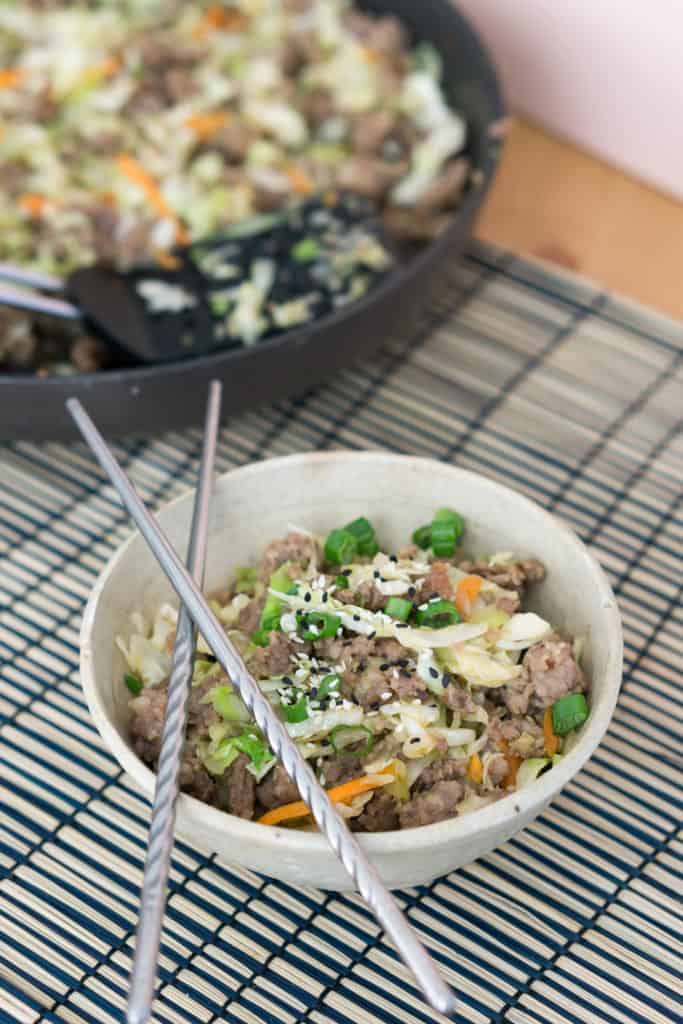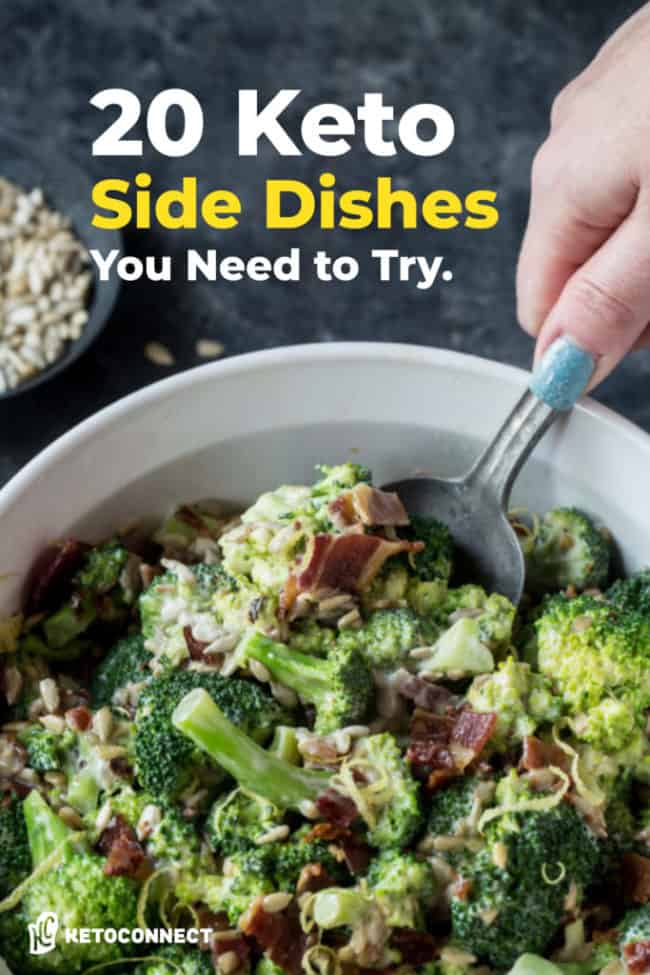This post will explain the main differences between paleo vs keto, the benefits of each diet, and ultimately help you decide which lifestyle is best for you. You will also learn how and why you might want to combine the two diets into one.
There’s no sense arguing over paleo vs keto since someone can follow a Keto Paleo diet…. and if that’s confusing, you better keep reading.
The History of Paleo vs Keto
Before agriculture and technology took hold of our food supply, people were hunter gatherers. There weren’t any factories or fast food chains, so people hunted wild animals, caught fish, and ate seasonal fruit and vegetation that grew in their area.
Both paleo and keto diets attempt to replicate the lives of our ancestors to some degree. While the paleo diet focuses on the foods our ancestors ate, the keto diet mimics the presumed metabolic state of our ancestors.
Did Cavemen Eat Low-Carb?
- The plants our ancestors ate were much smaller, higher in fiber, and contained less sugar. These days, fruit and vegetables are bred to produce higher yields that taste better and contain more calories.
- Processed sugars and refined grains simply didn’t exist. They didn’t have access to carb-rich desserts, sodas, and candy.
- Paleolithic people could only eat local carbohydrates when they were in season. Today, someone living in North Dakota can enjoy a mango from Mexico in January, thanks to modern technology. Depending on where you lived 2 million years ago, it’s quite possible you didn’t have access to carbs during the cold season.
- Prehistoric people mostly ate meat and fish, but also gathered nuts, berries, and other wild plant matter.
It’s safe to say our ancestors ate a lot less carbohydrates than people do on a modern Standard American diet.
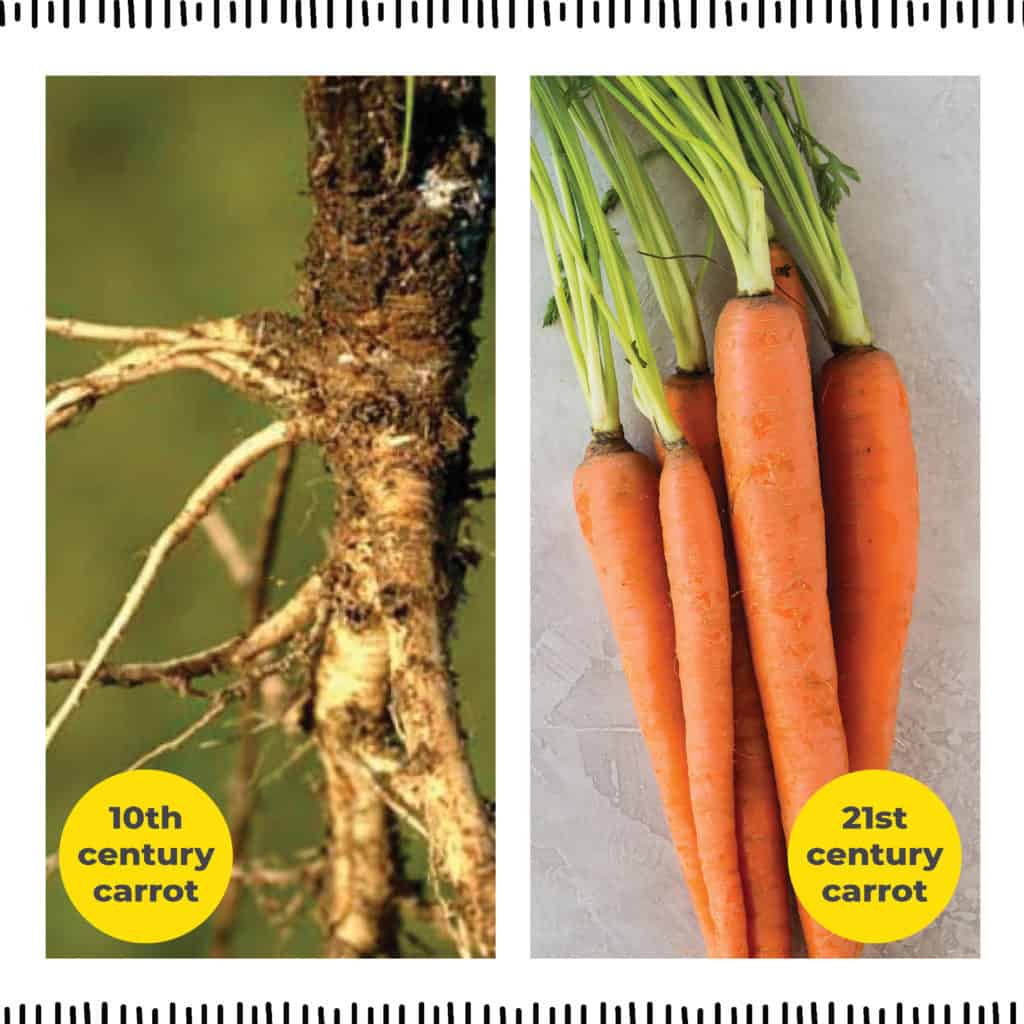
What is a Paleo Diet?
The paleo diet has become popular in the last decade thanks to books like The Whole30, The Paleo Diet, and various scientific articles. The basic premise is to eat how people ate in the stone-age or Palaeolithic era, which was about 2.5 million to 10,000 years ago.
There aren’t any strict guidelines surrounding calories or macros, but you are encouraged to choose lean, wild-caught, pasture-raised meats and to avoid anything processed.
Foods Allowed on a Paleo Diet
- Lean meat, fish, & poultry
- Eggs
- Fruits
- Vegetables
- Nuts & Seeds
- Avocado oil, coconut oil, extra virgin olive oil
- Honey and Maple Syrup
- Stevia and Monk Fruit
- Coconut Sugar
Foods to Avoid on a Paleo Diet
- Grains (wheat, cereals)
- Legumes (Beans, lentils, peanuts)
- Dairy
- Artificial Sweeteners (aspartame, sucralose)
- Sugar alcohols (erythritol)
- Vegetable Oils (canola, soybean, corn)
- Refined Sugar
Paleo vs. Primal: What’s the Difference?
While paleo and primal are very similar diets, there are some key differences.
- Full-fat dairy is allowed on a primal diet, preferable raw.
- Fatty cuts of meat are encouraged on a primal diet.
- Overall fat intake is increased on a primal diet.
Paleo Diet Benefits
We believe any diet that removes processed foods is a good one. There are a few health benefits that make the paleo diet so popular.
- Increased Energy
- Clearer Skin
- Improved cognitive health
- Improved glycemic control
- Reduced risk Cardiovascular Disease
- Weight Loss
- Manage diabetes
- Reduce risks of cancer
- Mitigate autoimmune disease
What is a Keto Diet?
A ketogenic diet is a high-fat, low-carb diet. On it, you’ll replace starchy breads and sugary cereals with high fat foods like avocado and coconut oil. Carbs should make up less than 5% of your caloric intake or about 20g per day. The lack of carbohydrates forces your body to deplete its glycogen stores, which it keeps for energy then switch to using fat for fuel (ketosis).
Ketosis is a much more efficient source of energy than glucose. Your body needs to break down fat from your diet and within your body in order to make ketones, unlike glucose, which is created when you consume carbohydrates. Ketosis literally converts your body into a fat-burning machine.
Since the keto diet is based upon numbers and macros, no food is necessarily off limits. As long as your daily carb intake is low enough, you will be in a state of ketosis.
Foods Allowed on a Keto Diet
- Fatty meats, fish, poultry
- Eggs
- Full-fat Dairy
- Fruit Oils (Coconut, avocado, extra virgin olive oil)
- Animal Fats (Lard, tallow, suet)
- Nuts & Seeds
- Leafy green vegetables
- Berries
Foods to Avoid on a Keto Diet
- Grains and Cereals (bread, pasta, oatmeal)
- Tubers (potatoes, beets)
- Most Fruit
- All Sugar (Honey, agave,
maple syrup ) - Dessert & Candy
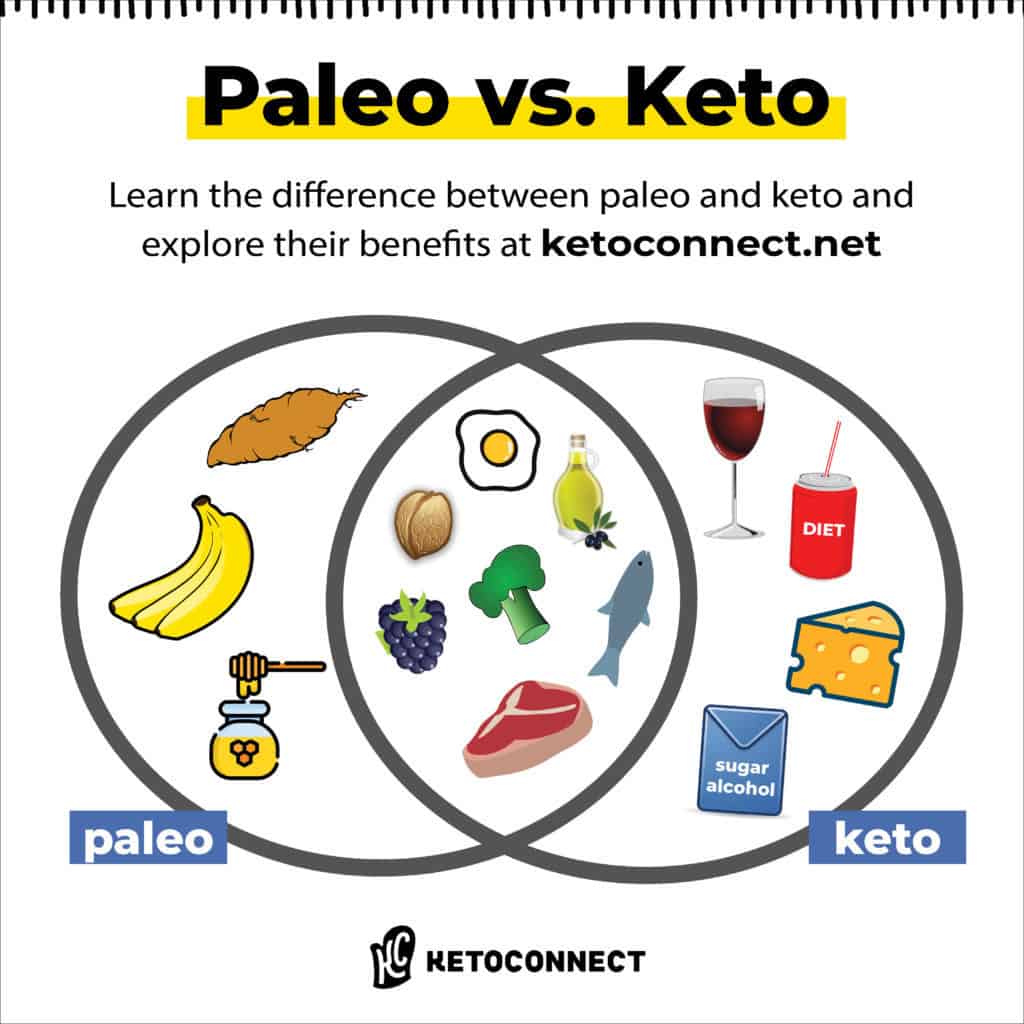
Benefits of the Keto Diet
The benefits of the keto diet are quite similar to the paleo diet. Both diets cut out processed foods and are much higher in nutrients.
- Weight Loss
- Sustained energy levels
- Improved Heart Health
- Reduction in Epileptic Seizures
- Aid in Diabetes Treatment
- Improved PCOS symptoms
- Better Skin
- Cancer Treatment
- Less cravings and reduction in sugar addiction
- Mental clarity
- Satiety (feeling full)
- Reduced inflammation
The Difference Between Paleo & Keto
While these diets are quite similar and can even be used in conjunction, there are a few main differences.
- The keto diet encourages fatty cuts of meat, while the paleo diet encourages lean meats.
- The keto diet is a strict low-carb diet, whereas the paleo diet allows for fruits, honey, and starchy vegetables.
- Dairy is off limits on a paleo diet, but gets the green light on keto.
- Alcohol, artificial sweeteners, and sugar alcohols are all considered keto-friendly, but not paleo-friendly.
Paleo vs Keto: Which Diet is Healthier?
The best diet is the one you can stick to. We always recommend experimenting with different diets until you find one that fits your lifestyle longterm. With that being said, there are a few things to consider when choosing between paleo vs keto diets.
I Just Want to Eat Healthier
If you just want to eat healthier, the paleo diet is a great place to start since you don’t have to worry about tracking carb intake or reading a bunch of nutrition labels. While the paleo diet is strictly made up of whole foods in their natural state, the keto diet does allow for some processed ingredients, like Diet Coke for example. These ingredients won’t hinder ketosis, but they aren’t necessarily healthy.
So much of our modern food supply contains small amounts of processed ingredients, making it hard to maintain a strict paleo diet. This is one of the reasons many people prefer a keto diet since it allows a little more wiggle room.
I Want to Lose Weight
A diet rich in carbohydrates can increase your appetite, leave you feeling sluggish, and feed sugar cravings, which is why low-carb diets are recommended for weight loss. You might have difficulties losing weight on a paleo diet because it still allows for fruit, honey, and starchy veggies. Even though these are healthy sources of carbs, they can still hinder weight loss.
I Want More Energy
When your blood sugar spikes and crashes, you spike and crash. We’ve all experienced the afternoon energy crash when you’re fatigued, you can’t focus, and you need a coffee or a snack to keep going. Keto meals don’t send blood sugar levels sky rocketing, which results in sustained energy levels, better focus and improved mental clarity. A paleo smoothie for breakfast and sweet potato at lunch might be enough carbohydrates to leave you feeling low energy by mid afternoon.
The Paleo Keto Approach
If you want to follow a paleo diet, but also want to be in a fat-burning state of ketosis, there are only a few tweaks you will need to make.
- Keep carbs around or below 20-30g per day.
- Avoid starchy vegetables (yams, beets).
- Avoid high carb fruit (banana, pineapple, mango).
- Choose fatty cuts of meat. Don’t fear saturated fat!
The Paleo Keto diet is made up of strictly whole foods, is low in carbs, high in fat, and is dairy-free.
Three Reasons to Try a Paleo Keto Diet
Many of our readers are following a keto diet and love it, but there are a few reasons someone might want to try a Paleo approach to keto.
- Dairy Sensitivity – You might not realize you’re sensitive to dairy until you cut it out for awhile. Some people report weight loss, better skin, and improved digestion after going dairy-free.
- Improve Gut Health – By cutting out sugar alcohols, dairy, and other keto snacks like low-carb wraps and bars, you might experience better gut health. Lots of keto snacks are filled with added fiber and sugar alcohols that can leave you feeling bloated.
- Emphasis on Whole Foods – Some people on a keto diet only count carbs and don’t pay any attention to the quality of the foods they’re eating. This “Lazy Keto” approach has its drawbacks since it allows for suboptimal, processed ingredients.
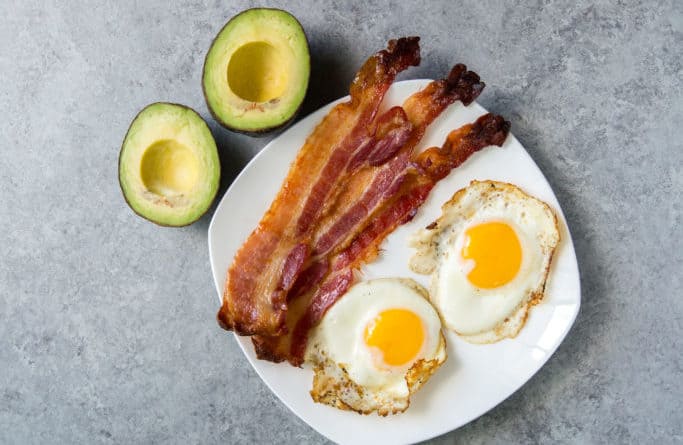
Are you interested in trying a Paleo Keto Diet? We are hosting a Whole Foods Keto Challenge for the month of June where participants are challenged to only eat meat, vegetables, nuts, berries, spices and healthy fats. Can you go a whole month without the following?
- Sugar, sweeteners, and sugar alcohols
- Alcohol
- Grains, beans, legumes, soy
- Dairy
- Additives like carrageenan, MSG etc.
- Baked goods or replacement desserts
If you’re up for the challenge, sign up for support or connect with our community online.
Paleo vs Keto: The Conclusion
Both the paleo and keto diet are great options for anyone wanting to improve their health a number of ways. While there are pros and cons to both methods, there are ways you can combine the keto and paleo methods into one.
Experiment with your diet to know which lifestyle is best for you and your goals. Perhaps paleo is a stepping stone to your keto journey, or vice versa. Whatever you do, enjoy getting to know your body, learning new recipes, and feeling healthier.
Have you tried a paleo diet? Let us know in the comments below.
